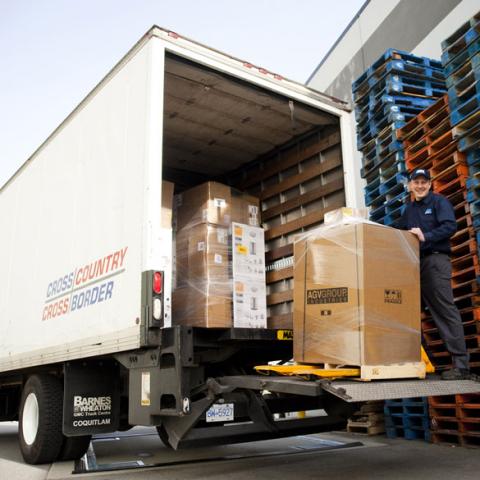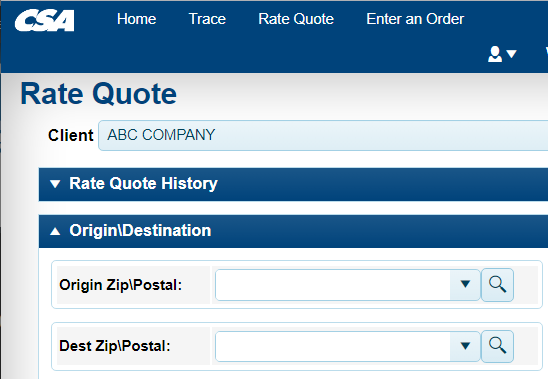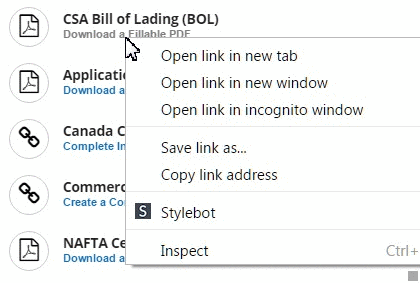What You Need to Know About Pallets
Lately, there has been an increase in demand for used pallets, as well as changes in the rental market -- all of which hint at a changing pallet landscape. But what pallets are currently in use, and why is it so important?
Unless your business specializes in extremely small items, like jewelry, or extremely large ones, such as cars, chances are your merchandise has been transported by pallet somewhere along the way. Pallets are the most common method of moving and storing goods, and pallet shipping remains a great choice for companies looking to take advantage of LTL freight rates to transport goods across North America.
It's important to know about pallets when you're making transportation decisions, as being better educated about your pallet shipping options will help you pick the best option for what you are moving. There are several good things to know about pallets.
First and foremost, there is a difference between a pallet and a skid. Skids have no bottom deck boards, whereas a pallet is a flat structure that has been designed to allow a forklift, pallet jack, front loader, or other jacking device to easily and stably lift goods that have been secured to the pallet by stretch wrap, shrink wrap, or strapping before shipment.
Pallets can be made of wood, plastic, metal, and even paper. Though they come in a number of sizes and configurations, they can be placed into two categories: stringer and block.
Stringer pallets use a frame of three or more parallel pieces of timber, or stringers. The top deck board are affixed to the stringers to create the stable base structure of a pallet. In a warehouse, the deck board side will face the corridor. Stringer pallets are also know as "two-way" pallets, as a pallet-jack can only be used from two sides to move it, and lifts by the deck boards.
Block pallets have been designed to be stronger than stringer pallets, as they have both parallel and perpendicular stringers that makes handling more efficient. In a warehouse, the block pallet's stringer side will face the corridor. Interestingly, block pallets are also known as "four way" pallets, as the can be manipulated by a pallet jack on all four sides.
But the type of pallet isn't all you need to know-- there are also a number of different grades of pallet. Pallets are graded depending on their newness and how many times they've been repaired. The grading system is as follows:
- A premium pallet is a very clean pallet that has probably been used only a few times. There are few repairs-- if any.
- Grade #1 or A Grade pallets are clean and structurally sound, as they have typically been repaired so that it is close to its original condition. For example, broken stringers may have been replaced or repaired with metal plates, and all damaged deck boards have been replaced.
- A Grade #2 or B Grade pallet has typical has had stringer damage that has been repaired by attaching an additional stringer alongside the damaged one. This way of repairing stringers is commonly referred to as a companion stringer, block stringer or double stringer. “B” grade pallets usually have two or less repaired stringers.
- A Grade #3 or C Grade is a pallet in poor condition and is typically accepted by few companies. A "C" grade means that a pallet has been repaired numerous times, and most of the stringers on a “C” grade pallet will have companion stringers, while the deck boards will be inconsistent in size, spacing and thickness.
What is a GMA Pallet?
A GMA pallet is one that is made according to the specifications outlined by the GMA (Grocery Manufacturers Association), a GMA pallet can also be called a "Standard 48" x 40" Pallet", "GMA 48" x 40" Pallet," or "GMA Block Pallet."
What is a CHEP Pallet?
A CHEP pallet is a blue pallet owned by the Commonwealth Handling Equipment Pool, a company that rents pallets to customers in a range of industrial and retail supply chains. Participants return CHEP pallets to a nearest retrieval centre.
When planning you LTL trucking logistics, pallet shipping for your goods is a must. Using pallets to transport goods has many benefits:
- Pallets dramatically reduce the labor needed to load and unload trucks, which keeps price low.
- Pallet dimensions are standardized (40" x 48") which allows for easier LTL load planning, for CSA this means we can provide you with cost-effective pallet pricing, that is both fast and accurate.
- Pallets dramatically lower the chances product damage and worker injury, as there is substantially less handling involved.
See our other article about heat treated pallets.
To get an LTL freight quote for your next palletized LTL freight we welcome the opportunity to assist. For more information about pallets specifically, check out this webinar on “The State of the Pallet Market” from Modern Materials Handling. To learn more about the requirements for pallet shipping to Canada or from Canada to the USA check out our previous article on wood pallet requirements for shipping cross border.





